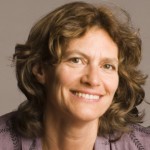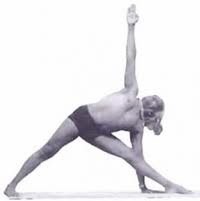What is yoga? Just a reminder….
Patanjali uses the term yoga in two related but different ways. The first and fundamental is yoga as ‘Self Realization’: yogash citta vrtti nirodhah; tada drashtuh svarupe avasthanam’; vrtti sarupyam itaratra, (Sutras I-2 – I-4). When the mind field is no longer distracted by confusion and delusion, one abides in the infinite spaciousness of being. That ‘I am’ open, unbounded, luminous spaciousness is seen (vidya), known (atma jnana) and this seeing/knowing is stable. (avasthanam). When not abiding, one’s identity is entangled in the world of forms (prakriti) and the formless (purusha) is obscured.
The second use involves yoga as a set of practices that lead to the elimination of the obscurations and the awakening to wholeness. Because the overwhelming majority of the yoga sutras are not about resting in stillness, but are addressed to acting in the world of forms, prakriti, it is possible to forget that ‘self realization’ is the true goal. If we are not alert, our self identity can wind up entangled in our practice and not our divinity. “I am a Christian”, “I am a Buddhist”, ‘I am an Iyengar Yogi”, or whatever. This level of identity, full of thoughts, beliefs and dogma, leads to anxiety, (what if I am not doing it ‘right’!): fear (what if the community rejects me?); pride (our method is better than your method!) and many more such openings to suffering.
Practice is about finding balance and harmony in body, mind, spirit and cosmos. The Universe is non-denominational. Our cells are non-denominational. The organic intelligence, emerging and evolving moment to moment, from atoms to galaxies, is non denominational. And the wisdom of the body lives this harmony moment to moment. All we have to do is trust (shraddha) that by dropping our attention into the organic realms (the feminine), feeling the inherent aliveness, and nurturing this connection so that it remains stable and conscious, our own innate divinity will shine through simply and clearly. Practice is not about the endless attempts to be redeemed from a flawed state (original sin?) but about helping to reveal our true nature as always being whole and complete (purna). With awakening, practice, and all of our life’s unfolding, becomes the spontaneous expression of wisdom and compassion that flows straight from the heart of the cosmos. This wisdom and compassion is available to everyone, everywhere, at all times and is used to help bring more light and love into the world.
The intelligence of life begins in the primal oceans we carry around in our cells and the body’s living matrix, Fluid Intelligence knows the rhythms of the sun moon and stars, of gravity and the innate wisdom of water. Can we begin to feel this? Can we discover our innate buoyancy that arises from our cells? Use a bolster, foam roller or folded blanket and explore the happy baby pose. Release hands and feet, arms and legs and allow them to feel like kelp floating in the oceans seeking the sunlight. Drift with the currents, keep releasing into the floor with the spine, spinal muscles and organs and feel the body melting.
Three energy states defined in the Yoga Sutras are: 1. too much, known as rajas; 2. not enough, known as tamas; and 3. just right, known as sattva. Too much includes muscular efforting, where the mind grabs onto the muscle tissue, and excessive tension anywhere, including sense organs and gut body. Not enough is dullness, heaviness without sensitivity, unconsciousness. Just right is the dynamic balance of weight and lightness, perceptual aliveness, effortless action, and a sense of continuous flow moment to moment. This is the state of integration, of moving into increased sensitivity and creativity. Dullness needs fire, dynamism and arousal to get the energy moving. Excessive tension needs water, cooling, quieting to slow the energy down. Learn to play with fire and water, monitoring and modulating moment to moment towards deeper and deeper levels of integration. Feel as free as a jellyfish or octopus (the original ashtanga yogis).
To bring this sensitivity into our human structure, we will utilize Tom Myer’s “Anatomy Trains’ model of fascial continuities to track our own lines of action and perception from cells and organs to structure (muscle/bone/fascia) and vice versa. We will begin in the feet, as tadasana is our home base for understanding the human body. The DFL begins on the soles of the feel witht he flexor muscles and tendons. This is where we get push of from the floor in walking, running or dance. Face a wall, place hands on the wall for balance, and begin to explore reaching down from the metatarsals, like ballet point without the big toe. The ankles rise, but let the heels hang down, even as they lift away from the floor. In other words, try not to use the gastroc/soleus muscles which attach to the heel, but these deeper muscles. As the heel lands, feel the sole of the foot lengthening, not the ankle collapsing. Keep the knees bent so the quads do not try to help, as they inevitably will. Repeat daily until action is clear.
Bring same action to the feet in dog pose. Notice the ankles, knees and hips of the dog as well as the length of the anterior spine and the freedom of the neck. (DFL). Makes it look easy.
From the feet we add the groins and pelvis in the standing forward bends. the primary action is extension through the muladhara learned in squatting. Babies find support when losing balance by activating the anal rooting reflex which awakens the tail end of the spine. We learn this in squatting, but if we have lost the flexibility, we can use ideo-kinesis, imagining a long dynamic tail emerging back from the pelvis. The grounding energy of the muladhara trifurcates (like Shiva’s trident!) into the two legs and tail. In tadasana, the three are parallel and you have a fish body. In forward bending, the tail (and entire spine) differentiates to allow length and stability. Notice how these guys use their tails to balance the weight of their torsos leaning forward. What would it feel like to have that energy available? Imagine a tail as long as your human spine, which makes your ‘human’ tail the center point of the spine and the fulcrum of a movement of the pelvis over the hip joints. Your long spinal muscles are not needed to move you in and out, up and down, if you use the tail energy. You can also imagine having your sitting bones elongating to help find the grounding/lengthening action of the muladhara.
In the next series of standing poses, the fish body series which includes trikonasana, parvakonasana, ardha chandrasana and vira, we add the adductors to keep the DFL engaged. The skaters action integrates the feet to the pelvis along the DFL as it involves the adductors, not the quads or hamstrings. Use a towel or blanket on the floor to practice pushing off on the back leg while the front legs bends and receives the weight of the body. If you are a well trained Iyengar yoga student, you will probably externally rotate the femur to do this and then lift the leg. Don’t !!! Internal rotation engages the adductors. Push down and into the floor like a skater pushing the blade into the ice. This is the action of the back leg in all of these standing poses. (and all legs in all poses to be precise). In figure skating, ardha chandrasana is know as a spiral, shown here by Ilia Kilmkin. Notice the lines of energy extending through arms, legs, head, eyes, crown chakra. In the yoga pose, elongate the inner back leg to lift it up. Don’t grip the outer hip muscles and crank the leg up. Elongate!




